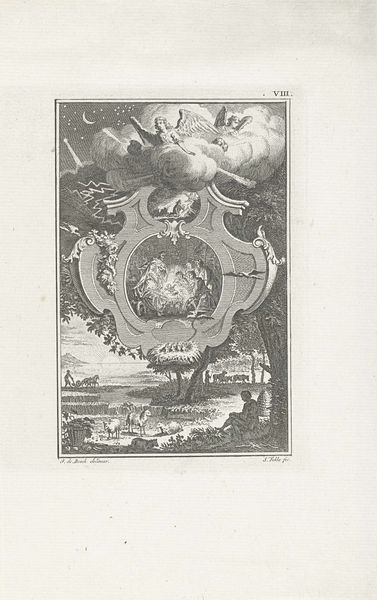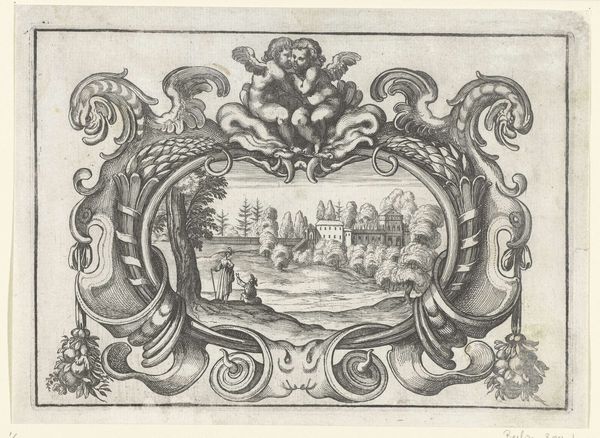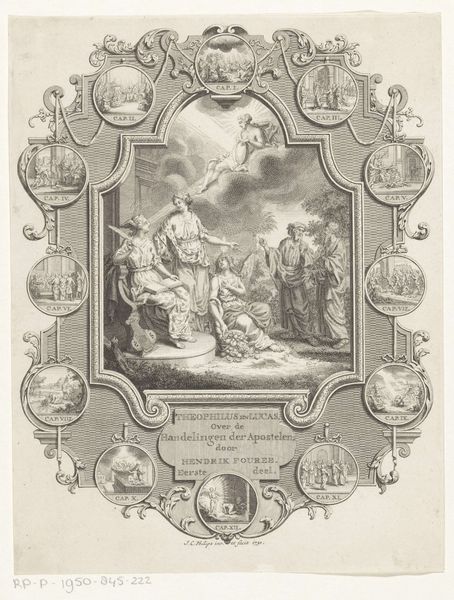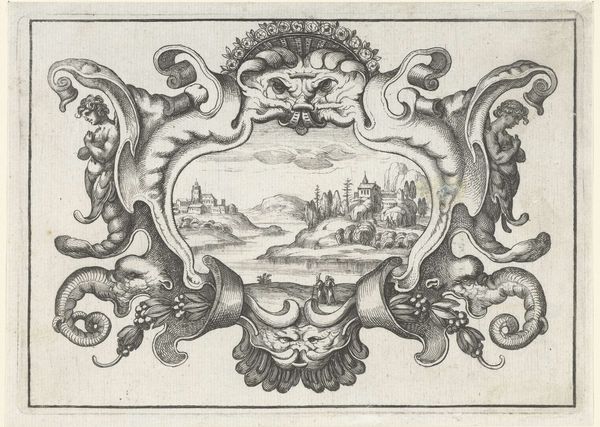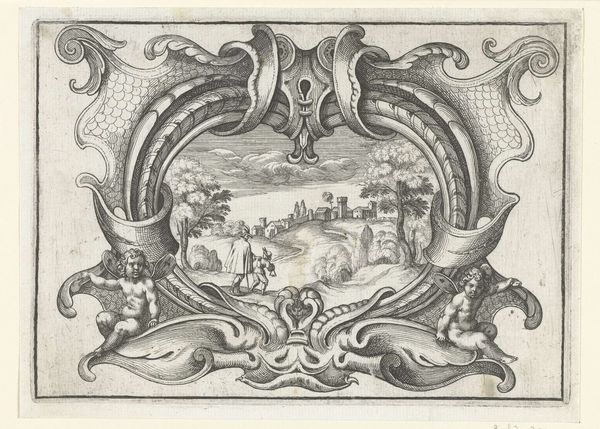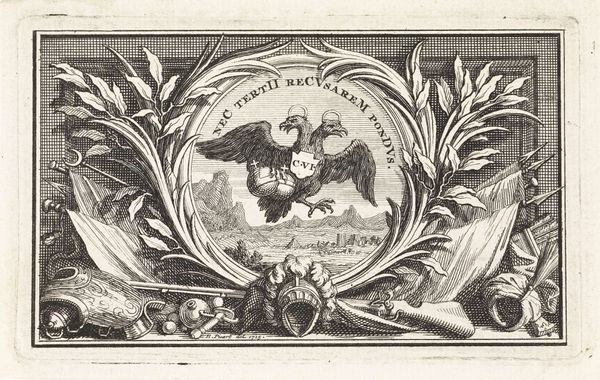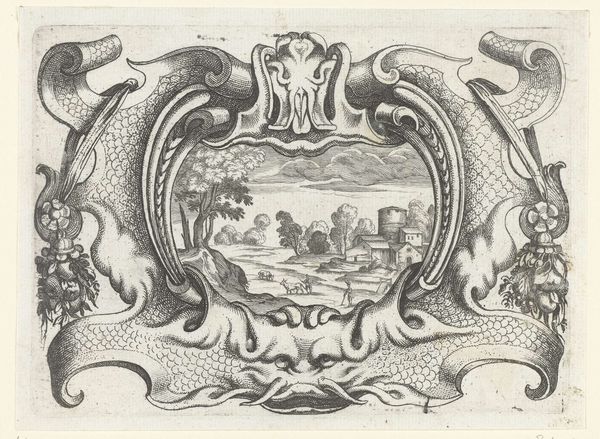
drawing, ink, engraving
#
drawing
#
allegory
#
baroque
#
pen drawing
#
ink
#
history-painting
#
engraving
Dimensions: height 46 mm, width 75 mm
Copyright: Rijks Museum: Open Domain
This is Jan Caspar Philips’ etching, depicting God the Father, crafted in 1752. The deity sits enthroned on clouds, radiating light, and holding what appears to be a scepter or rod in his right hand – symbols of power, authority and divine law. Even the clouds upon which he sits, reminiscent of a chariot, are ancient motifs, evoking images of deities traversing the heavens in mythologies across cultures and eras. Consider how these symbols echo through time. The scepter, as an emblem of kingship, extends far beyond the Abrahamic traditions, appearing in the hands of rulers from ancient Egypt to classical Rome. The emotional resonance of such imagery—the awe and perhaps fear of divine judgment—taps into a primal layer of our collective consciousness. Observe how, time and time again, humanity grapples with portraying the unseeable, expressing intangible concepts of power, authority, and the divine. These symbols, though varied in appearance, are united in their psychological effect, engaging us on a level that transcends time and culture.
Comments
No comments
Be the first to comment and join the conversation on the ultimate creative platform.


